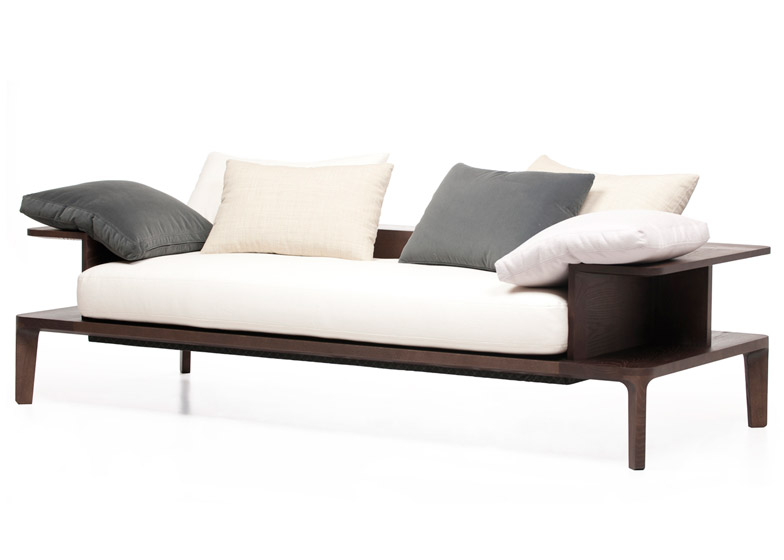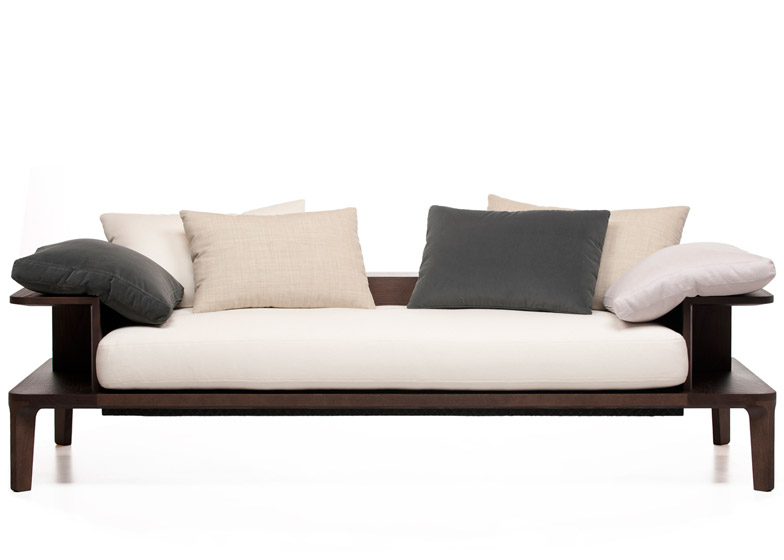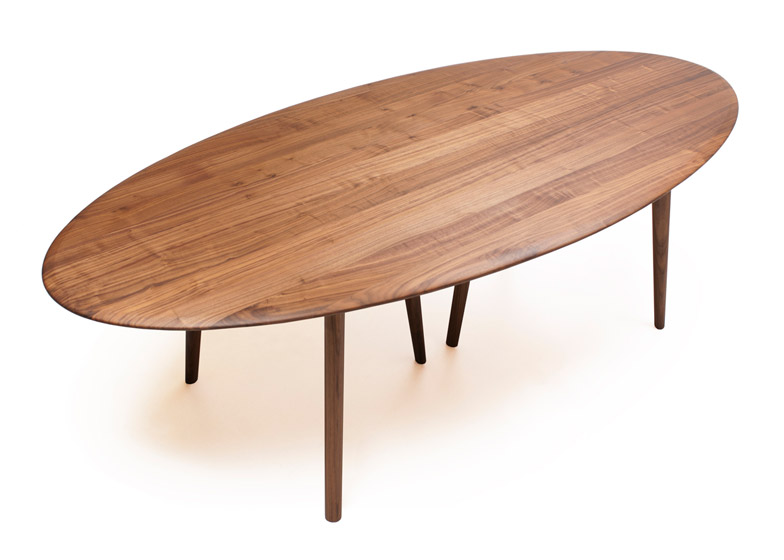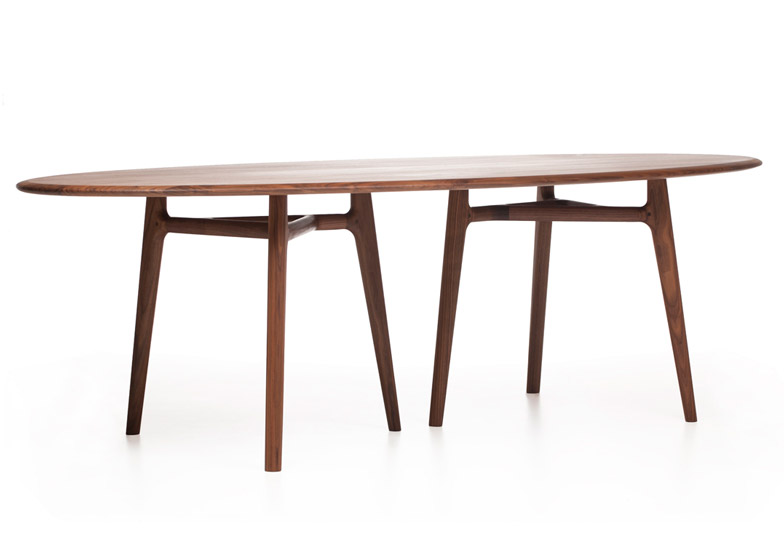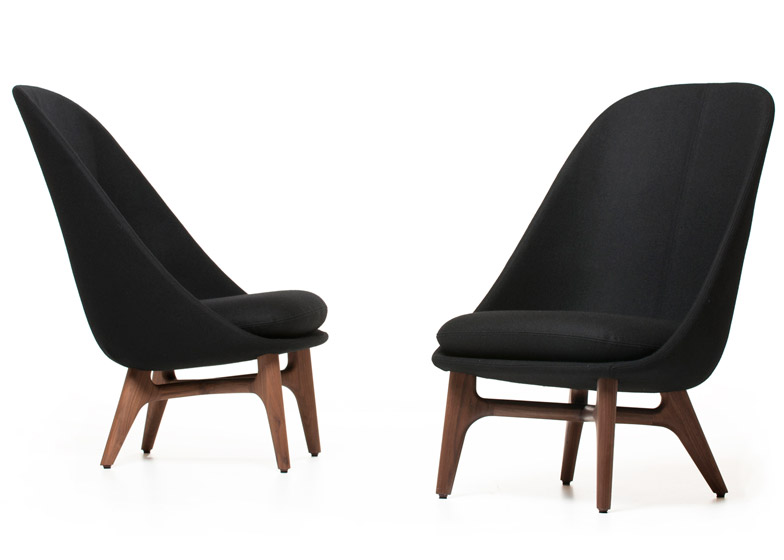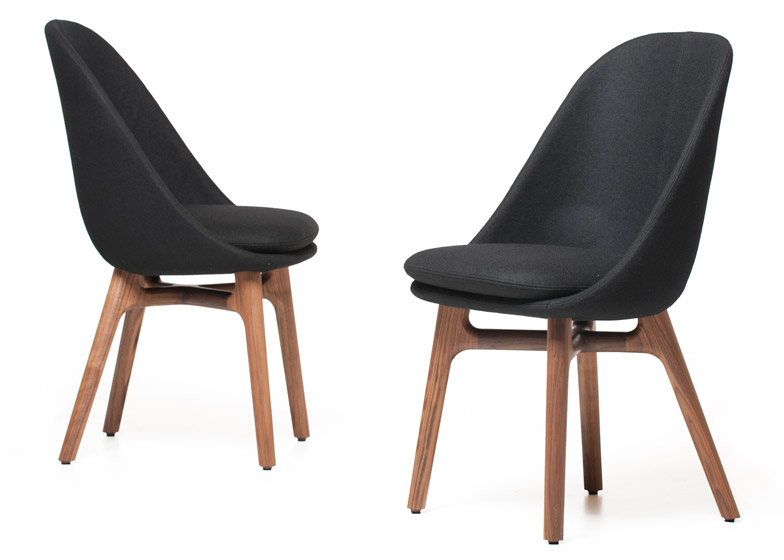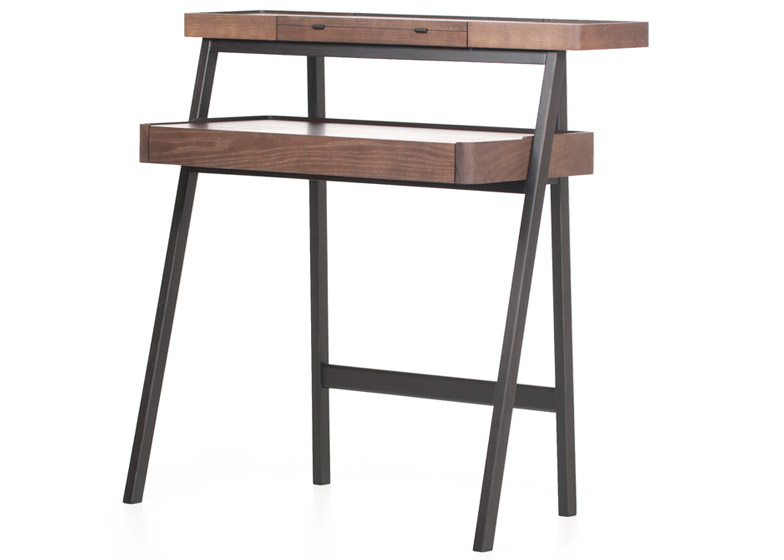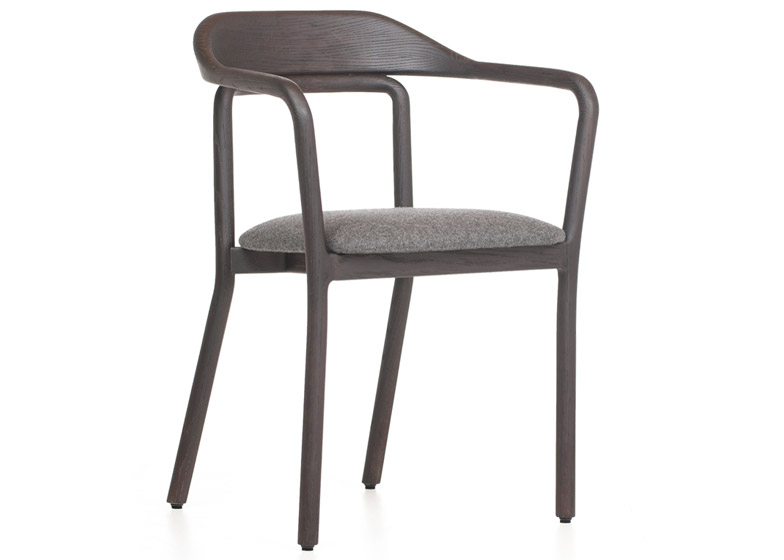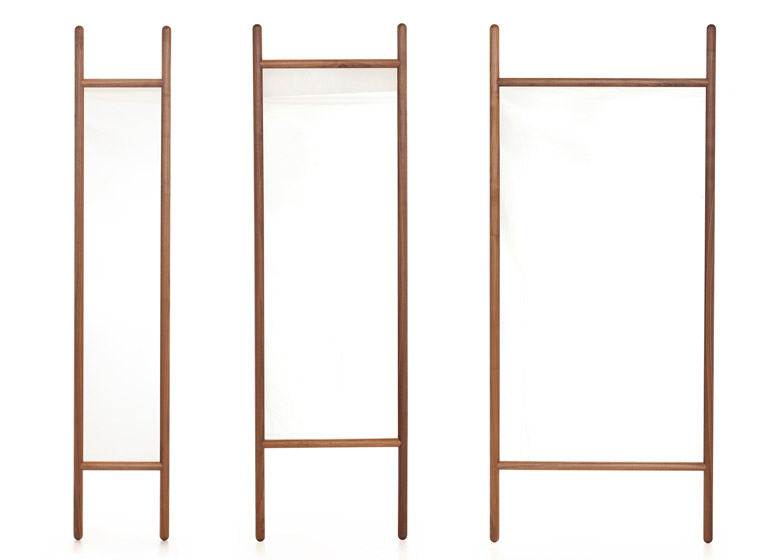Chinese design studio Neri&Hu will present a collection of wooden furniture for De La Espada in New York later this month (+ slideshow).
New items in the collection for the woodwork brand include the Opium Sofa, Solo Table and Tray Desk.
Neri&Hu took the typology of a Chinese Tang Dynasty opium bed and modified it to create a sofa, which has shelves under the deep arms for storage.
The oval Solo table sits on two sets of three legs, each arranged in a triangle.
A two-tier desk folds out into a vanity table, with a mirror in the top shelf and a drawer full of different sized compartments in the lower bottom shelf.
Neri&Hu's previous designs including the Extend Mirrors that prop up against the wall, slender Duet Chairs, plus their Solo Series of lounge and dining shell chairs are now being produced solely for De La Espada.
The collection will be shown at an exhibition in New York's meatpacking district during the city's design week from 18 to 21 May.
We interviewed Neri&Hu towards the end of last year for the opening of their design gallery, shop and event space in a former colonial police station in Shanghai.
The studio recently reinterpreted traditional Chinese architecture and courtyard typologies for a hotel in Xi'an.
See more architecture and design by Neri & Hu »
See more products for De La Espada »
See all our stories about furniture »
Read on for more details from De La Espada:
Opium Sofa
Opium beds for communal lounging have been in China since the Tang Dynasty, when opium smoking became an accepted social activity which necessitated a comfortable and presentable piece of furniture for receiving guests. neri&hu took this historic typology and updated it to create a contemporary sofa with a simple profile that retains the deep seat and low back of its inspiration. Flanking the sofa are deep arms which form two useful shelves, as well as side tables for books or a cup of tea. The solid wood frame cradles our tired bodies on a lazy Sunday morning, as addicts to our newspapers and coffee instead of the opium in imperial China.
Tray Desk
Trays function as a surface container for collectables, and this multi-tasking desk/vanity table was designed as two stacking trays on a light wooden frame . Contemporary lifestyles demand furniture to be more mobile and flexible, servicing multiple functions, while remaining lightweight for easy transport. This piece responds to that need, using the analogy of trays on trestles as a point of departure.
Solo Table
Solo Table is a solid wood dining table with purity of form and material.
Extend Mirrors
In the past, common bamboo ladders were used as household objects inside and outside country homes in China, functioning as an ever-ready stand for hanging a wide variety of things from tools and cloths to dried food. As a tribute to this utilitarian household symbol, neri&hu used three different ladder proportions to make a set of solid hardwood frames for floor standing mirrors. They lean on the floor in a casual manner, as ladders do, and can be used alone or as an interesting ensemble of many ladders with varying heights on the wall.
Solo Series (chair and table)
Inspired by the Eames Shell Chair, the Solo Chair is an updated version that transforms the early industrial look of the Eames iconic chair into a sophisticated, comfortable chair that is suitable both in domestic and commercial settings.
Solo chairs are a “universe within a chair”, wherein the upholstered shell hugs the sitting body to create a microcosmic universe for the person, where the chair becomes an object of shelter and refuge, where the person can be “solo” and undisturbed while being hugged in this position.
An upholstered foam-covered shell creates the universe that is the chair, and claims its singular autonomy in function, form, and beauty.
Duet Chair
The name speaks to the tectonic nature of the construction. Two pieces of bentwood work as a duet, creating the overall shape of the chair. They are stacked one on top of another to form the backrest, and while one extends to create the arm and front legs, the other turns to form the back legs. Originally created as a variation on the classic Thonet bent-wood tradition, the Duet Chair takes on a quiet yet graceful demeanor that is not unlike the German-Austrian classic original.
Neri&Hu Launches Collaboration with De La Espada
New York Design Week, 18-21 May 2013 at 345meatpacking
New York Design Week 2013 marks the launch of collaboration between Shanghai-based inter-disciplinary architectural practice, Neri&Hu Design and Research Office and leading modern woodworker, De La Espada. The launch event is presented by The Future Perfect at 345meatpacking, a stunning building by DDG. A large-scale purpose-built installation by Neri&Hu sets the scene for the debut of over ten new products born of their collaboration with De La Espada.
A unique sensory environment, the Neri&Hu installation for New York Design Week communicates at once the Neri&Hu approach to interiors and architecture, and their evolution toward product design.
Over ten new products will launch at the event, utilising timber extensively and spanning the needs of the home from dining to living spaces. The pieces are designed by Neri&Hu for their product brand ‘neri&hu’ and manufactured in premium materials by De La Espada craftsmen in Portugal.
The Future Perfect, host of the exhibition, will be the exclusive retailer of neri&hu furniture in the New York City and San Francisco areas.

